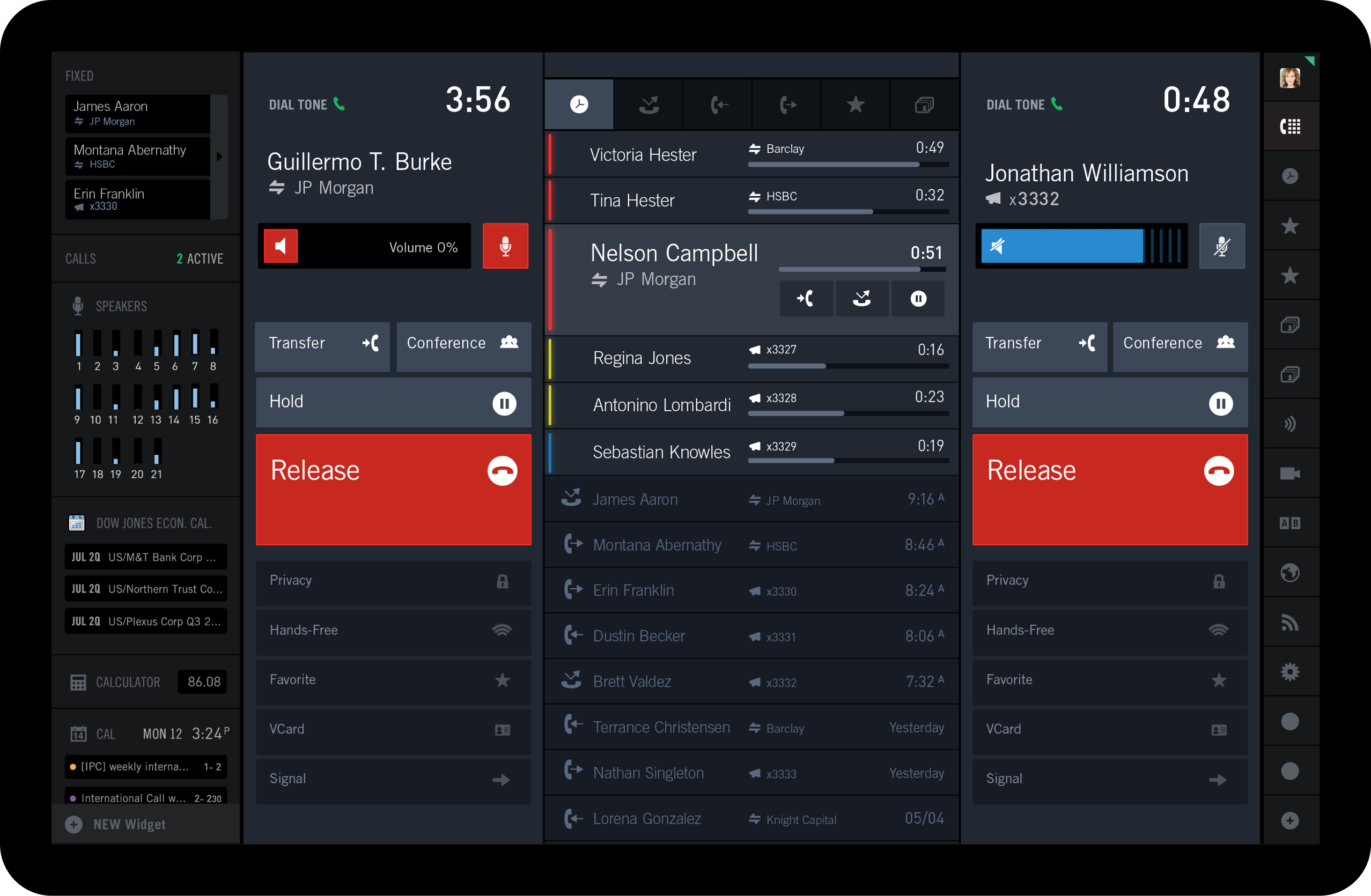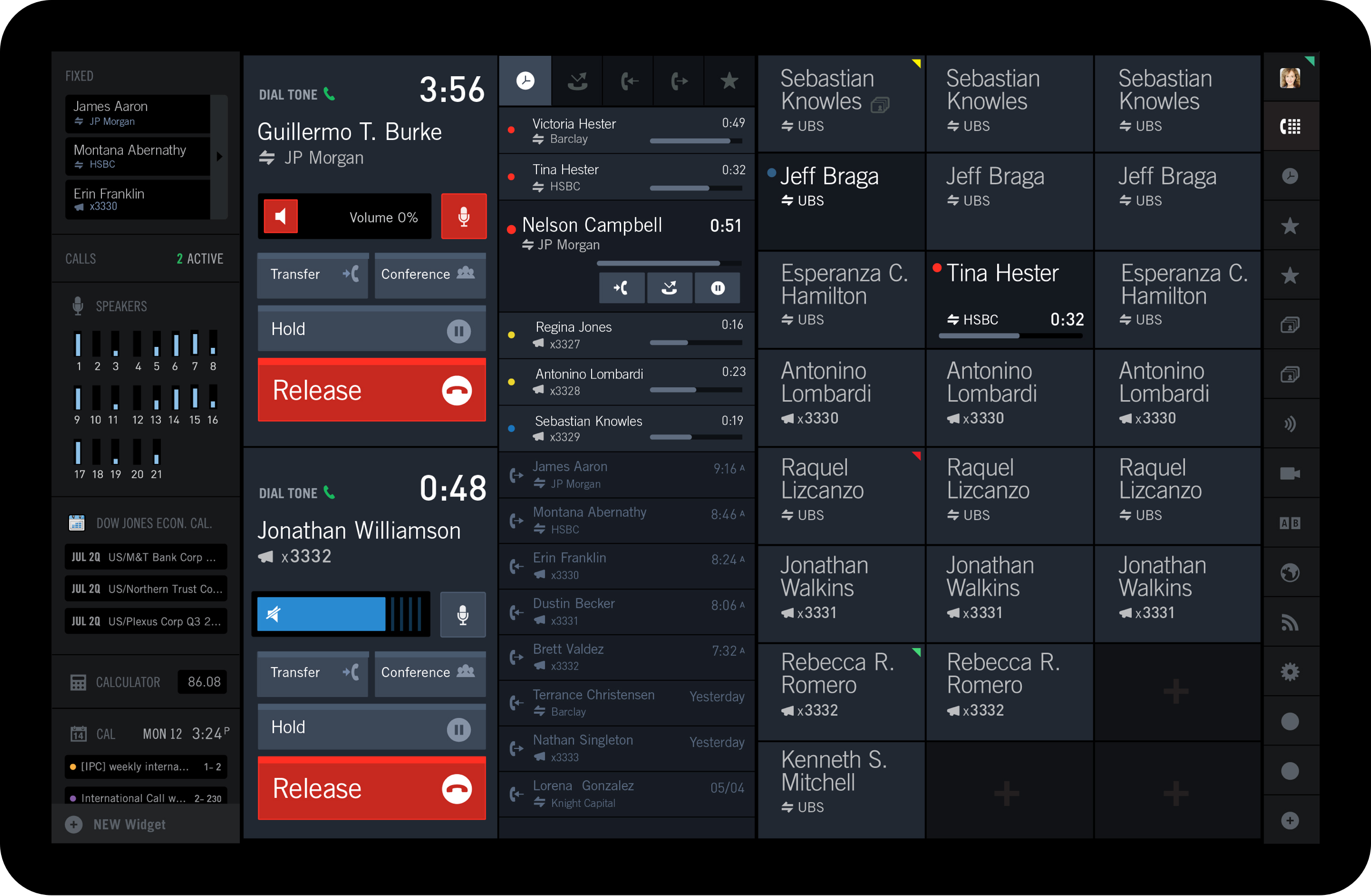Mercury
Custom mobile touch screen platform for traders
Redefining success for a highly specialized tool used under high-pressure conditions
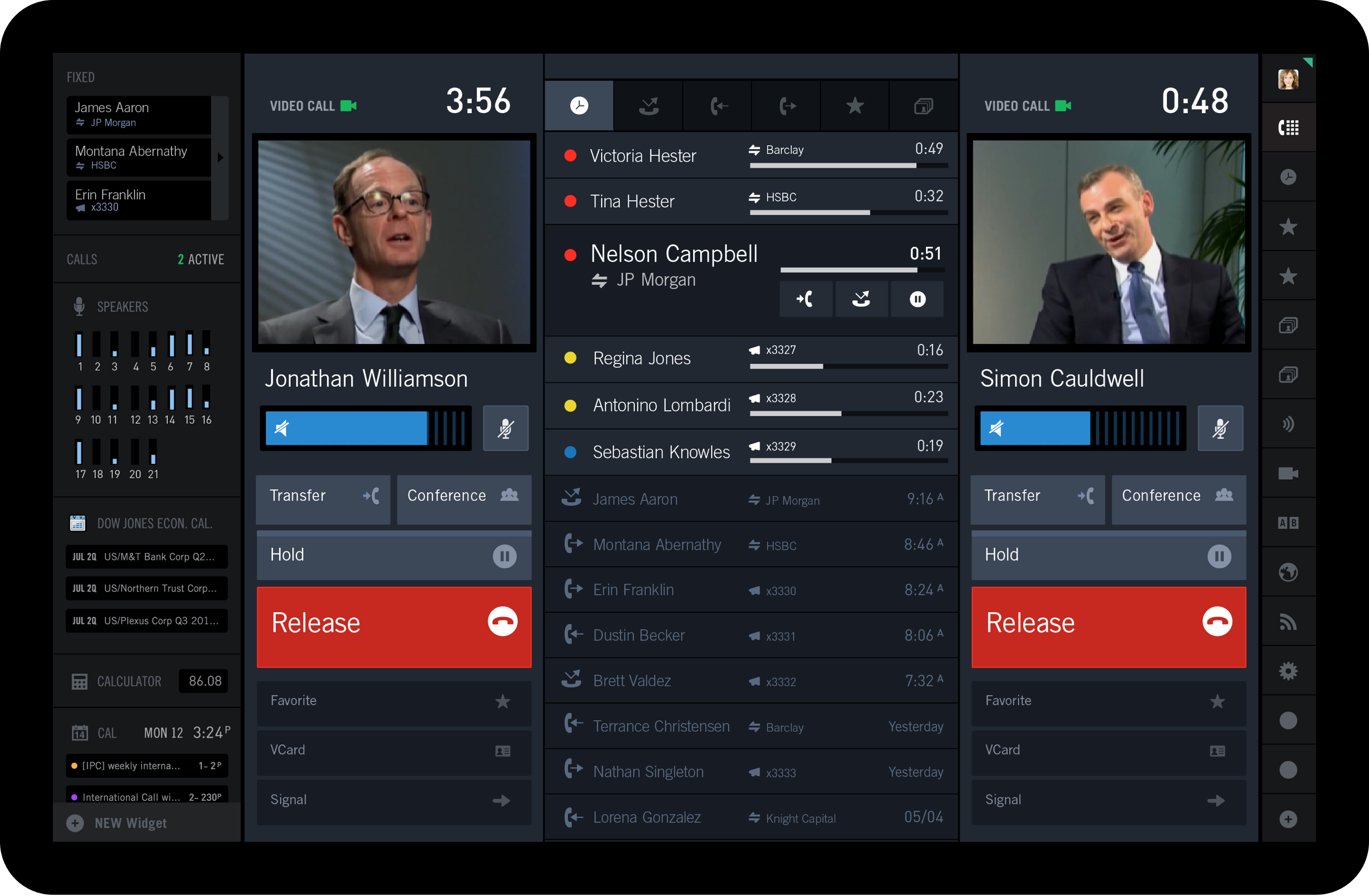
2014
Financial Industry, New York
Custom mobile touch screen OS turrent platform for professional traders
For this engagement, the client was preparing to redesign their flagship product, a trading turret which is a secure, multi-line phone and information system, used by trading desks on a stock market floor. The turret runs off a platform which is their proprietary communications network produc5. This was an intense coordinated effort of industrial design, electrical engineering, and completely custom OS software creation, complete with novel and ownable interactions, designed specifically for their expert users.
I was part of a 4 person interaction design team who concepted, tested and documented a working spec of the OS on the device we ended up referring to as Mercury. The software runs on a platform called QT5, a java-based platform for mobile touch screen devices. It was a novel chance to throw out the known conventions of iOS and Android, and be able to take a look at things completely from a fresh start.
Initial Wires
There were a number of upfront precedents and platform constraints, due to the fact that this product had previous versions in existence. We used these as a baseline to get started. The product however, had never been powered by a touchscreen interface which introduced some new challenges. This was a tool being designed for a very specific user type, we also wanted to get some tests in front of users very early on to help us identify opportunities and eliminate options that just wouldn't work. The initial wires served as our testing material.
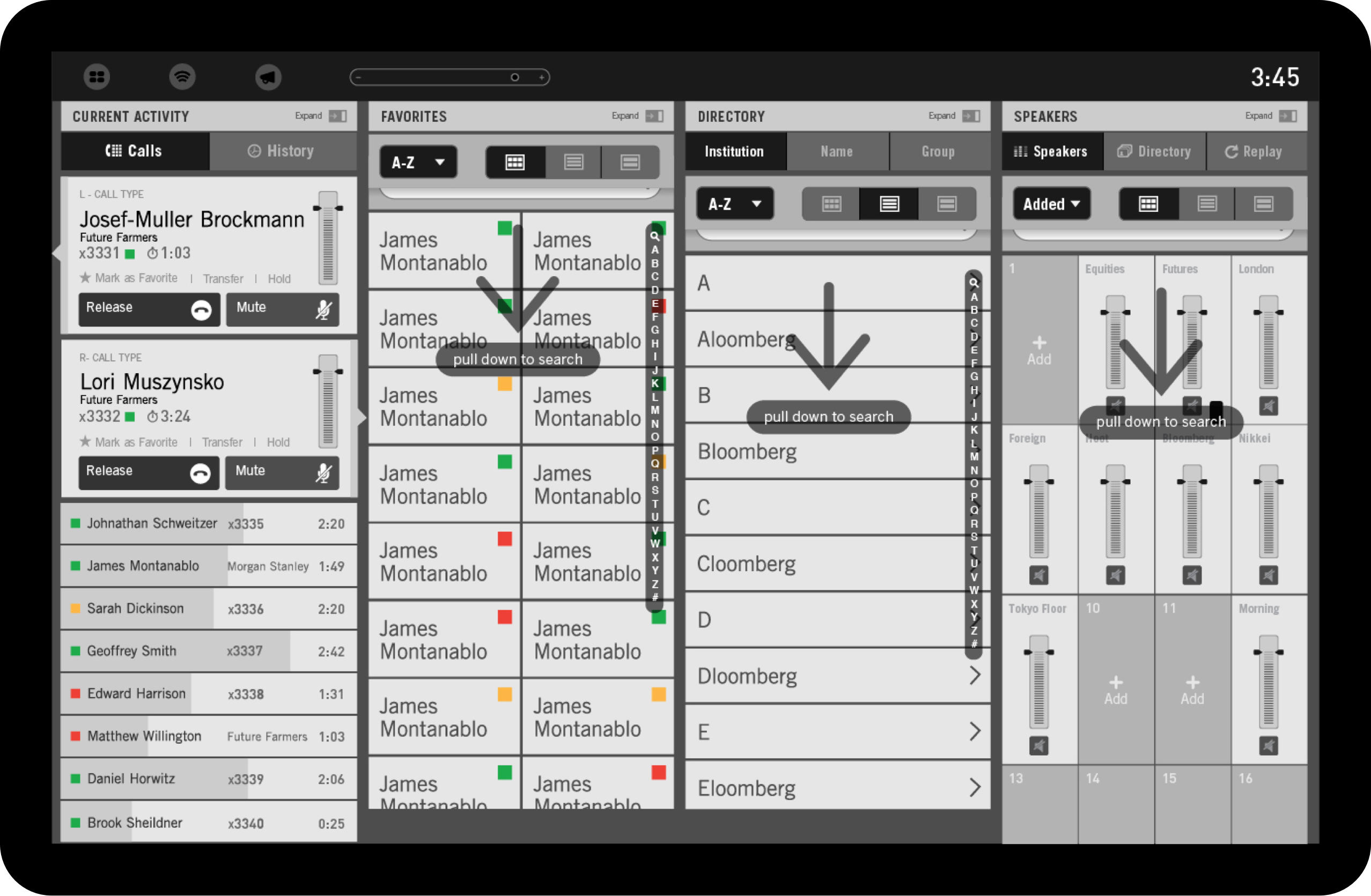
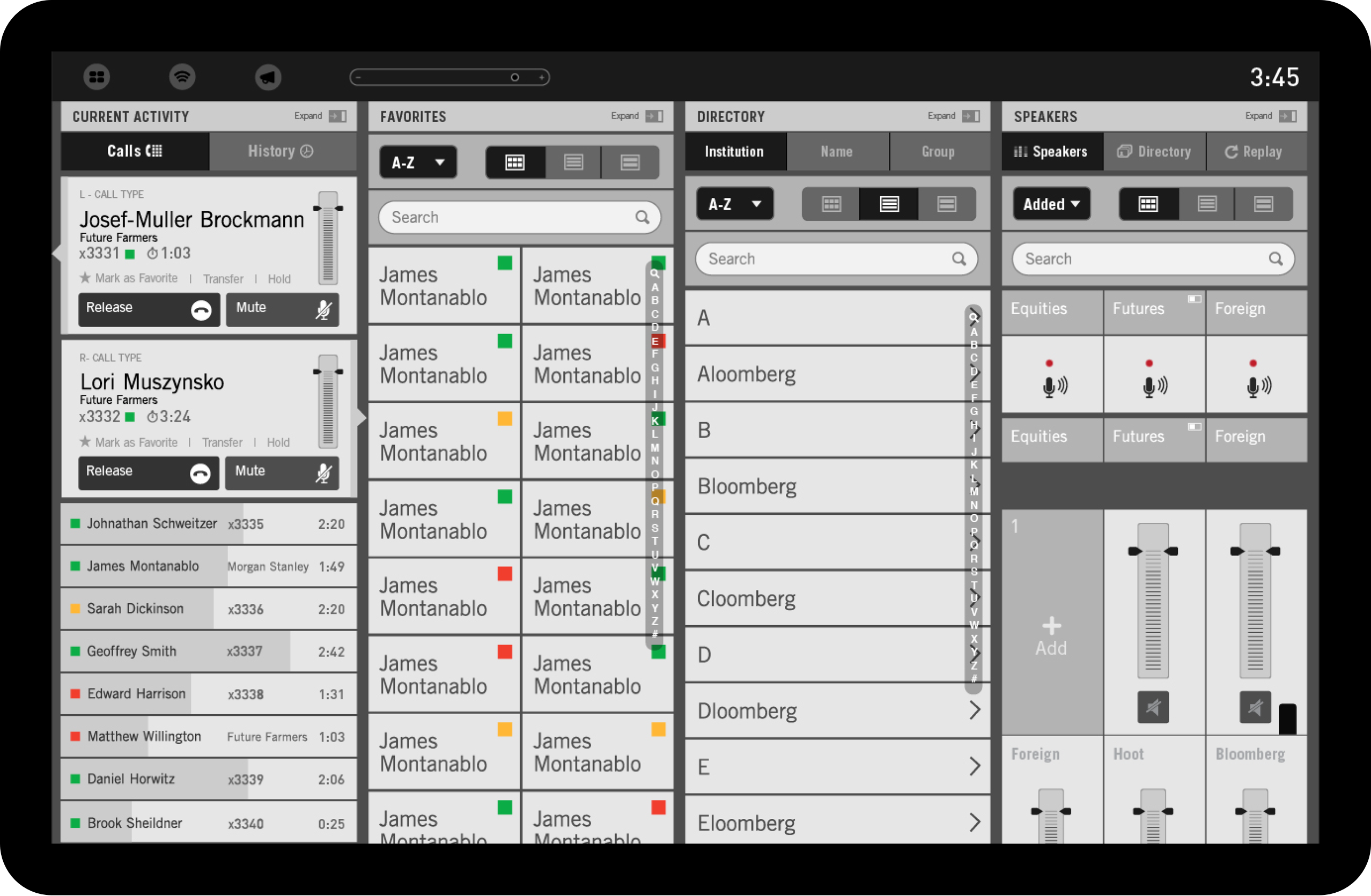
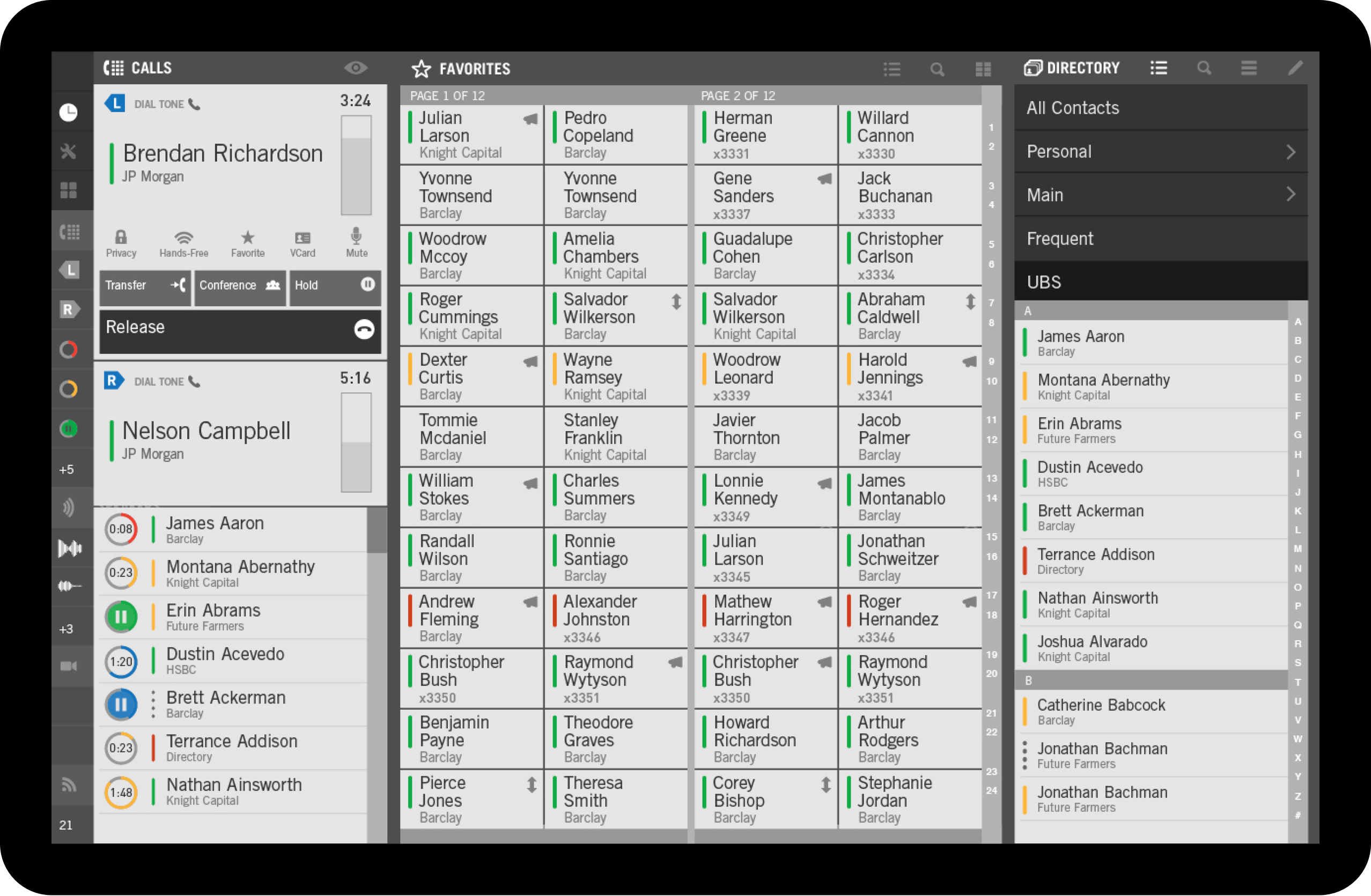
User Testing
Getting in front of day traders was a challenge that our team ended up pulling off. All participants from the testing sessions mentioned existing behaviors of looping into other digital tools such a Bloomberg Chat, in addition to news and sentiment sources. A major behavior we uncovered was constant switching between applications and the need to see multiple inputs at the same time. Our interaction model for the main navigation was driven by this key insight.
Documentation
The end deliverable for the engagement was a detailed design specification document to be handed off to the engineering team to build the OS from. For the documentation, my team outlined every state of the OS from global interaction design guidelines, to navigation states, global styles, components and individual applicaiton use cases as well as fringe use cases. It was a very detailed level of documentation, equivalent to what you would see on the apple developer site.
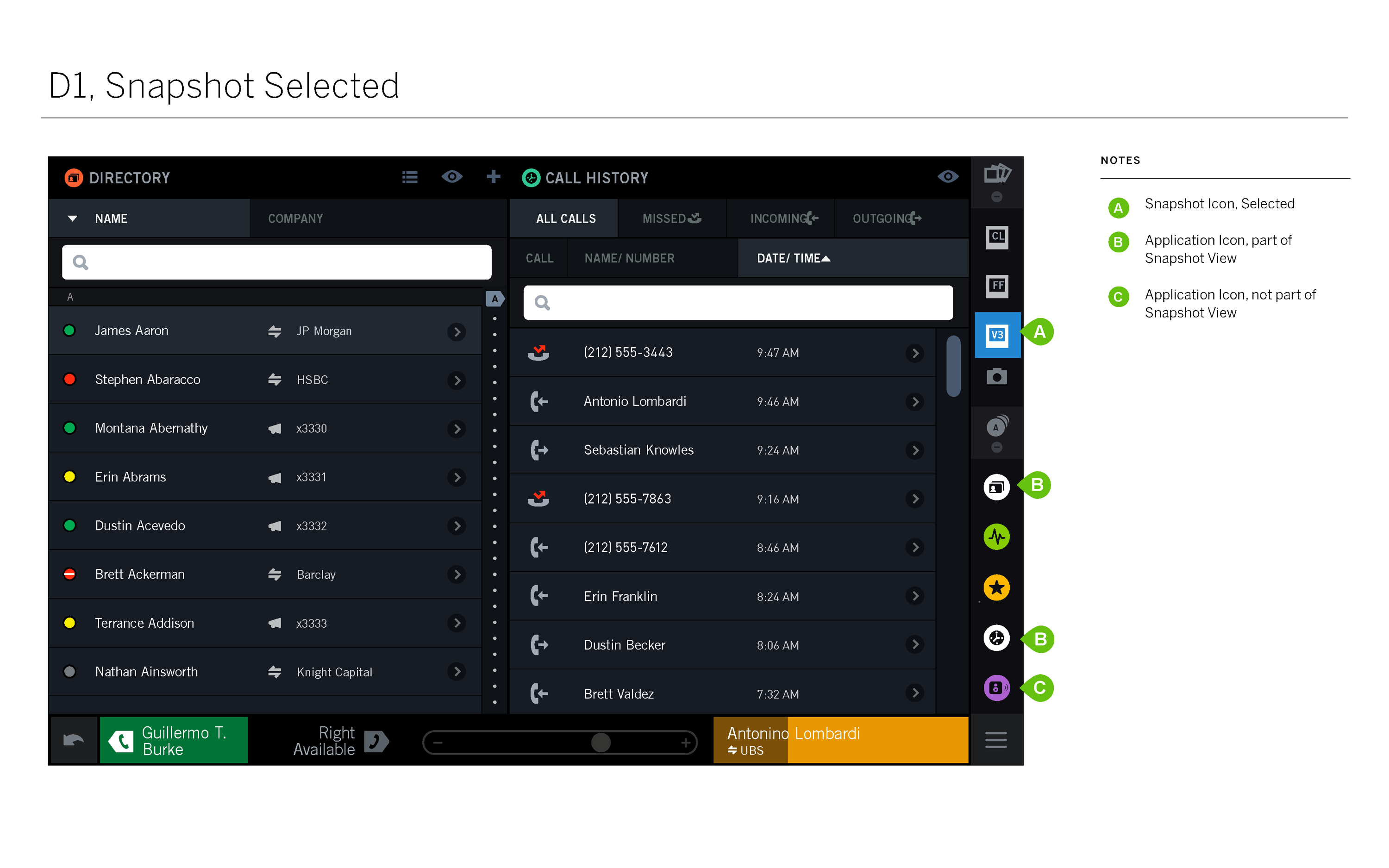
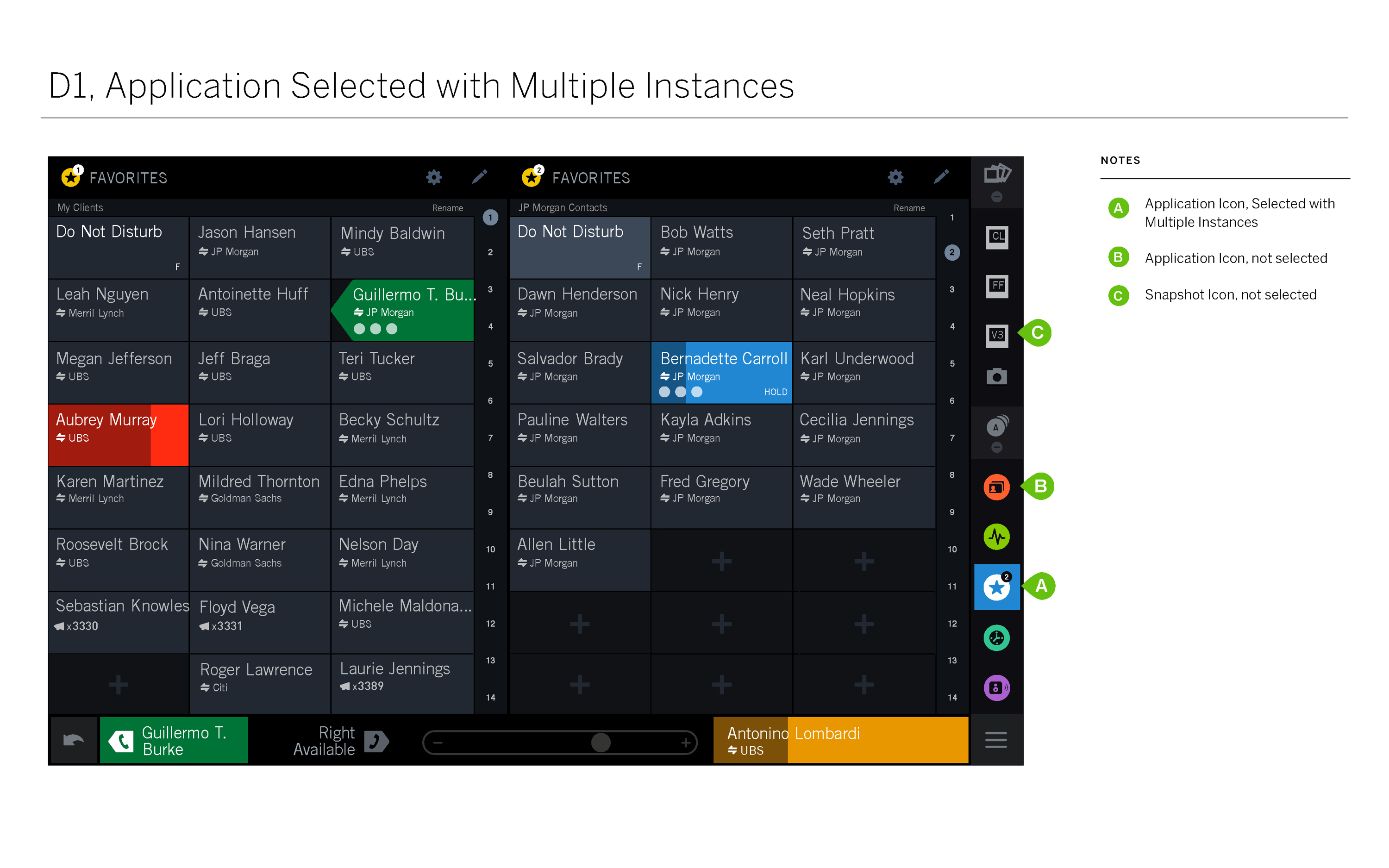
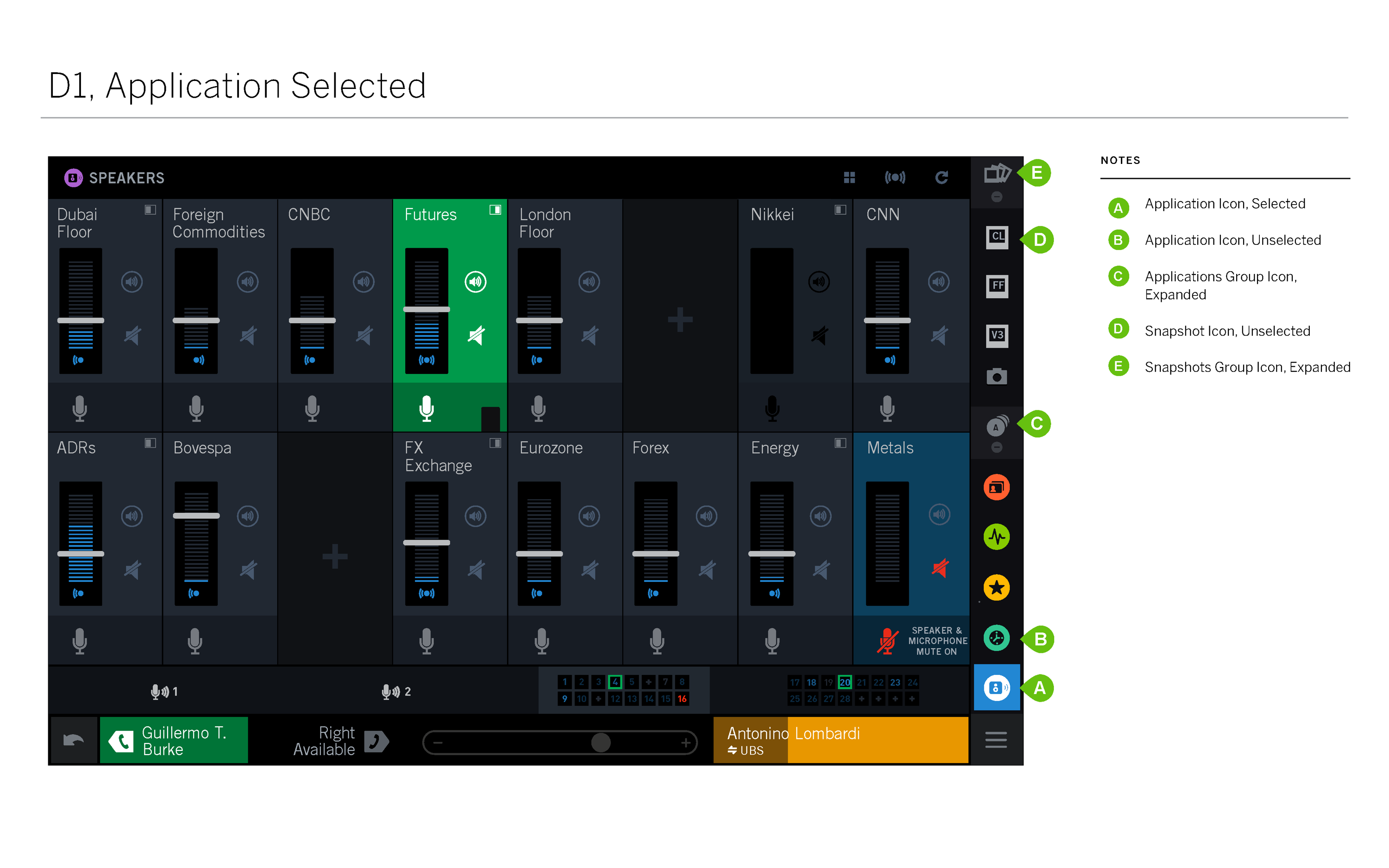
Final Designs
frog had also been sourced for the industrial design of the turret. The end form resulted in a custom tablet-like screen that was mounted in a base with tactile key pad & mutiple phone lines. I was responsible for the final design of the software – which required a robust taxonomy of visual components. I created a visual language system that was intuitive, could be expanded if needed, and generously supported the interactions needed by fast-paced, high pressure use.
